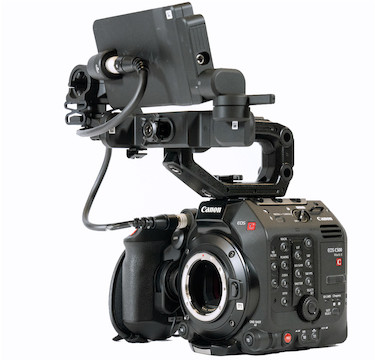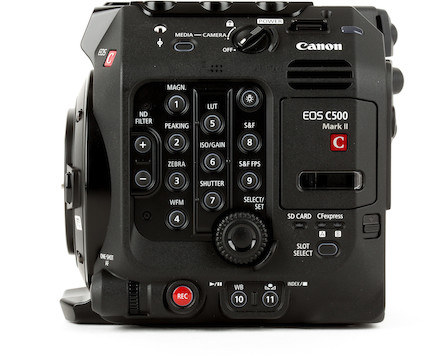Rent
Buy
Canon EOS C500 Mark II 5.9K Full-Frame Camera (EF)
Canon EOS C500 Mark II 5.9K Full-Frame Camera (EF)
Separately available accessories that may interest you:
- Canon Battery Charger for C300 Mark II and C200/B Batteries
- Canon LM-V2 4.3" LCD Monitor
- Canon EVF-V50 OLED Viewfinder
- Canon GR-V1 Camera Grip for EOS C200
- Zacuto Z-Finder for Canon C500 Mark II
- Canon CM-V1 Locking EF Mount
- Canon EU-V1 Expansion Unit 1
- Canon EU-V2 Expansion Unit 2
- Wooden Unified Base Accessory Kit for Canon C500II/C300III
- Wooden Camera Handgrip Extension Cable for Canon C-Series
- Canon UN-5 Unit Cable for Select Canon EOS Cameras & XC15
The C500 Mark II (EF) is a cinema-quality camera with a 5.9K, full-frame sensor that is capable of recording Canon Cinema RAW Light to dual CFexpress media slots. Key features include:
20.8MP, 5.9K, full-frame, CMOS sensor
Internal, 12-bit Canon RAW Light to dual CFexpress media slots
4.3-inch touchscreen LCD monitor included
EF-mount lens compatibility
Specifications
| Brand | Canon |
| Camera Mount | Canon EF |
| Camera Type | Cinema |
| Compatible Media | CFexpress Type B and SD |
| Imaging | Sensor
|
| Inputs/Outputs | Audio Inputs
|
| Item Type | Camera |
| Maximum Frame Rate | 120 |






















